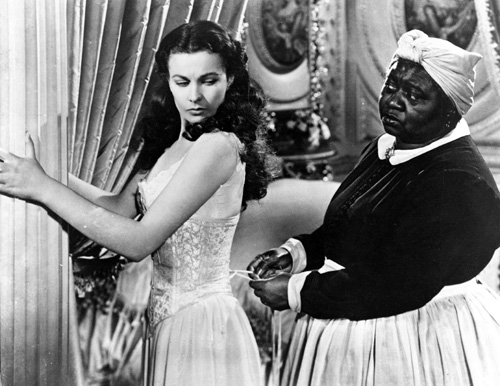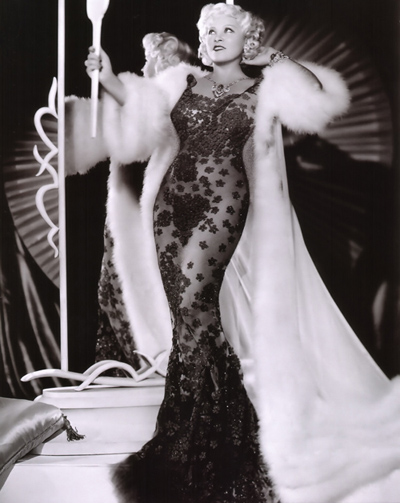Margo Jefferson likes unexpected juxtapositions. She takes delight in pointing out, for instance, the way sexpot Mae West adopts a man’s stride when it suits her purposes, or the fact that Hattie McDaniel’s film persona as “Mammy” was preceded by her persona as blues drummer High Hat Hattie. Jefferson, whose cultural criticism for the New York Times won her a Pulitzer Prize, will address the surprising intersections and interactions of black minstrelsy and white vaudeville in her
November 15 speech at this year’s Chicago Humanities Festival, “Blackface, Whiteface: Hattie McDaniel and Mae West.”
The subject might be of purely historical interest had vaudeville and minstrelsy not conspired between them to create the archetypes of American film. And as Jefferson has noted in a series of articles over the past 15 years, these particular portrayals—stereotypes of race, of class and of gender—help dictate the way Americans see one another on the street as well as on the stage.
Though the festival’s theme is “Laughter,” and both McDaniel and West are actresses known for their comic chops, Jefferson knows humor to be a deadly serious business. (Why else would Ralph Ellison have titled his seminal condemnation of blackface “Change the Joke and Slip the Yoke”?) We understand each other at least in part through the jokes we make about each other, and the portrayals we see onstage and on screen. Conversely, performances and observations fortify our own preexisting notions, about ourselves as well as the Other.
So as she examines the way white vaudeville and black minstrelsy nourished one another, Jefferson inevitably considers the portrayal of race and gender, and the extent to which performers have control over that portrayal. Could these well-known women undermine stereotypes in the very process of performing them?
Jefferson demurs: “Yes and no. They were certainly attempting to subvert the stereotypes. It was tougher for Hattie McDaniel, of course, but Mae West also gets caught up in them, especially as she gets older. Colette points out that in I’M NO ANGEL she’s much less the female outlaw—she’s thinner, Colette says, they’re locking her into her clothes. Likewise McDaniel—I listened to records of her as a vaudeville blues singer. She played the drums in black minstrelsy and black vaudeville. She’s a good sly witty singer. The world of commercial urban blues allowed black women a range they weren’t going to get in a movie
career.”

Indeed. Onscreen McDaniel was largely restricted to the role of “mammy,” one of the standard stereotypes of minstrelsy. (A well-known study of these types is bluntly if accurately entitled “Toms, Coons, Mulattoes, Mammies, and Bucks.”) Her confinement to prescribed roles was such that she might as well have joined the legions of black stage performers who “blacked up” to keep up with their white competition, in a weird case of life imitating art imitating life. She gained some range, though, by borrowing from the whiteface tradition.
Whiteface, an affectation of vaudeville, comes from its commedia dell’arte side: whiteface performers enacted clownishness and wore clowns’ makeup to prove it. When McDaniel winks her way through a performance of slow-wittedness that never fails to reveal the razor sharpness of the intellect behind it, is she in whiteface, or subversive blackface?
As is mostly the case in American culture, white performers got more from black traditions than the other way around. Jefferson points out West’s interest in black nightclubs and her adoption of minstrelsy gestures such as rolling of the eyes. “She becomes a sort of black, almost Amazonian sexual figure—a strange style of mulatto… And when Mae sings, she sounds black.” So West was often in blackface figuratively if not literally, performing the cultural construct of blackness.

But West was also, obviously, joking: with her impossibly voracious sexual appetites, she’s as removed from reality as any clown. And like the clown she’s at the center of a circus—the riot of stereotyped portrayals of women in general and white women in particular. Without West’s bad girl, the good girl—the sacred white virgin of Southern folklore—couldn’t exist. As West does blackface, emulating the sexual availability attributed to black women, can she also be doing whiteface, clowning around with the sacred cows of sexual virtue?
The analysis is further complicated by the fact that both McDaniel and West were in drag, so to speak, one denying and one exaggerating female sexuality in a way more characteristic of male performers than of women. It’s something of a scholarly commonplace that West’s portrayal of the feminine is so exaggerated that it verges on drag: that she’s playing a “woman” as much as any drag queen. But Jefferson’s take is quite different: “I think it’s more this figure who’s seen by virtue of her swagger as masculinized—she’s not fully a woman. Her drag is male drag, with that working-class swagger and the way she played around with that voice.”
In any case, Jefferson points out, what is seen as “womanly” varies as much with audience as with performer, if not more. “To some audiences Bessie Smith was seen as sexy, whereas to others—particularly white and black bourgeois—she seemed vulgar, and maybe mannish.”
Male or female? Black or white? Prisoners of stereotype or conquerors? It will be exciting to hear Jefferson explore these questions!
© Kelly Kleiman (11/1/09)—Special for FILMS FOR TWO®
Photo Credits:
Photo of Margo Jefferson appears on her Amazon Page
(original credited to Bent Murray of the New York Times).
Photo of Hattie McDaniel from GONE WITH THE WIND
(courtesy of NewsCom’s M.G.M. Album).
Photo of Mae West courtesy of Margo Jefferson.
© Kelly Kleiman (9/2/06)
